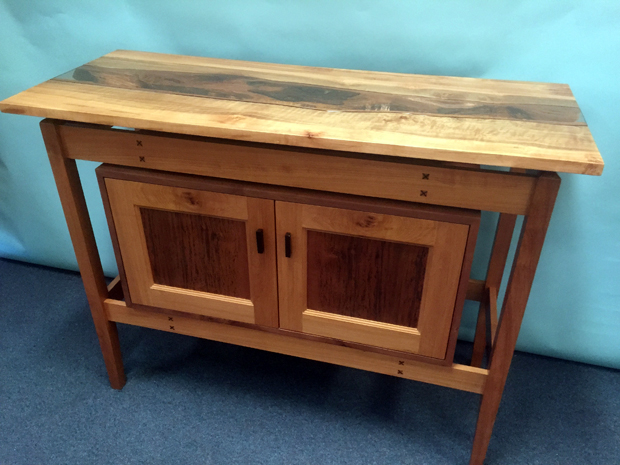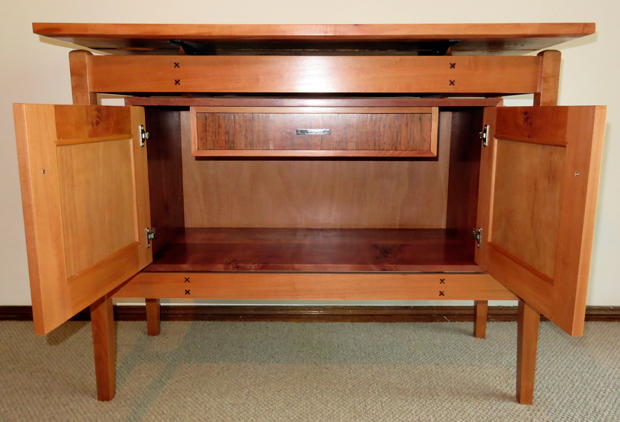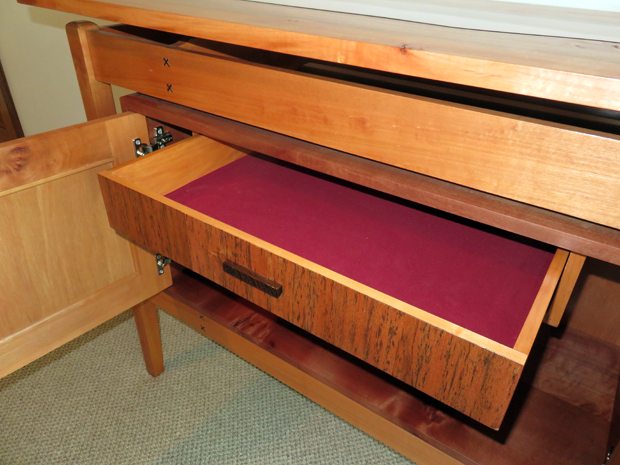Kris Manou
Year 12
Westfields Sports High, Fairfield West, NSW
Teacher: Michael Hoad
I have always had a fascination with timber, especially Australian timber. When it came time to design my Industrial Technology HSC Major project, naturally I was drawn to using native timbers. I was inspired by my brothers projects that were made using Myrtle and after contacting a few suppliers I was able to secure a slab of native Myrtle from the Newcastle Woodturners Guild. This was supplemented with Tasmanian Myrtle from Anagote Timbers in Marrickville.
My research led me to a designer in Washington State USA who uses timber slabs that are married with glass to create tabletops. I was able to incorporate this design feature in my project to create a unique yet functional flat surface for my table. Once I had the inspiration for the top the next phase was the designing and manufacturing of the table carcase and cabinet.
Traditional mortise and tenon joints were used for the rails into the legs. The legs were tapered to provide a more classical line. Exposed twin mortise and tenons was used to secure the cross rails to support the tabletop and the cabinet carcase. The twin pins were secured into the rails using wenge wedges in a cross formation.
The cabinet carcase was constructed using biscuited mitre joints and the drawer used dovetails and housing joints. I decided to use tiger myrtle veneer on the drawer front and door panels due to its distinctive grain pattern and colour. The door frames were completed using rail and stile router cutters. Handles for the drawer and doors were made using wenge to match the cross wedges of the rail tenons.
The most interesting work was done on the split slab tabletop. Once the slab was split and then the two halves where positioned, a paper template was then created to match the wany edge of the slab. This was then used by the glazier to create the glass insert for the top. Negative templates were then created to guide the rebating of the slab to accommodate the glass.
Once the project components were completed, the project was finished using three coats of Feast Watson Satin Wipe On Poly with a final coat of Danish oil after that. The project was then assembled for HSC marking.













